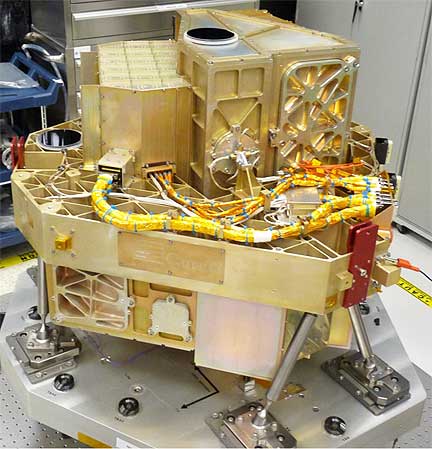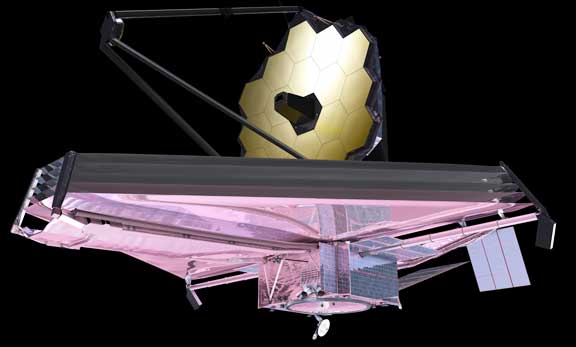
The Fine Guidance Sensor (FGS) and Near Infrared Imager and Slitless Spectrograph combined undergoing cryogenic testing.
Photo credit: COM DEV Canada
...has been delivered to NASA. The Fine Guidance Sensor (FGS) will enable the telescope to accurately and precisely point at the correct, intended objects for it to observe. The FGS is packaged together as a single unit with the Near-Infrared Imager and Slitless Spectrograph (NIRISS) science instrument.
FGS/NIRISS arrived at NASA's Goddard Space Flight Center in Greenbelt, Maryland, July 30. It has been undergoing inspection before post-delivery testing and then integration into Webb's science instrument payload known as the Integrated Science Instrument Module (ISIM). The Canadian Space Agency (CSA) developed the Webb’s Fine Guidance Sensor and the Near-Infrared Imager and Slitless Spectrograph. The FGS will direct the telescope precisely, allowing it to study stars and planets forming in other stellar systems. Both were designed, built and tested by COM DEV International in Ottawa and Cambridge, Ontario, Canada, with technical contributions from the University of Montréal and the National Research Council Canada, and scientific guidance of the FGS science team.

A September 2009 artist conception of the James Webb Space Telescope.
Credit: NASA
Although the NIRISS is packaged with the FGS, it is functionally independent. NIRISS provides unique capabilities that will aid in finding the earliest and most distant objects in the Universe’s history. It will also peer through the glare of nearby young stars to unveil new Jupiter-like exoplanets. It will have the capability of detecting the thin atmosphere of small, habitable, Earth-like planets and determine its chemical composition to seek water vapor, carbon dioxide and other potential biomarkers such as methane and oxygen.
The most powerful space telescope ever built, Webb is the successor to NASA's Hubble Space Telescope. Webb’s four instruments will reveal how the universe evolved from the Big Bang to the formation of our solar system. Webb is a joint project of NASA, the European Space Agency and the Canadian Space Agency.

